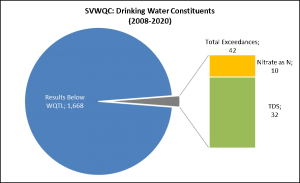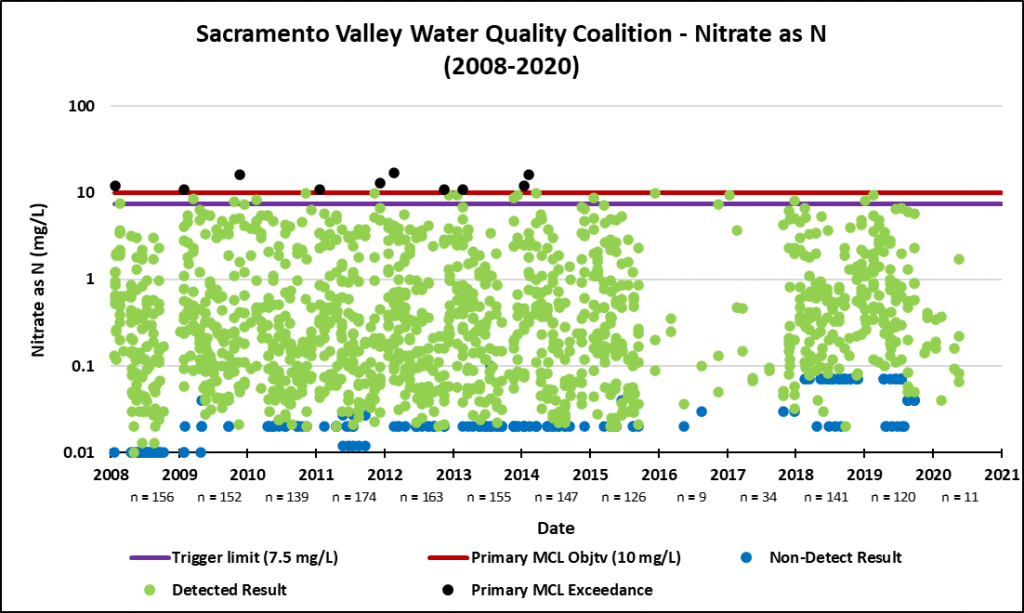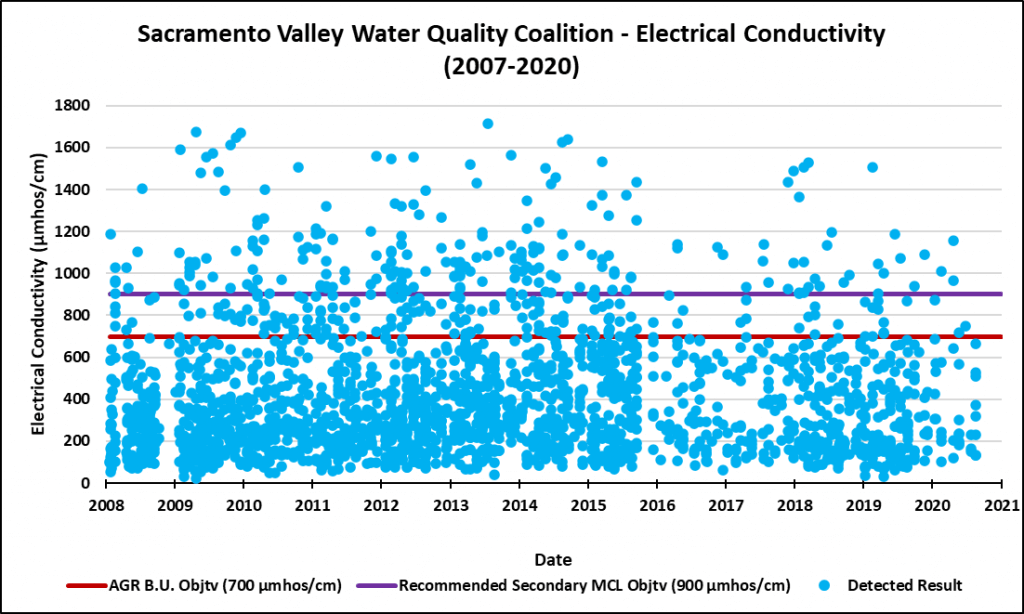By Bruce Houdesheldt
There is a concerted effort in the Sacramento River Basin to ensure access to safe drinking water for all communities (see Ensuring Access to Safe Drinking). NCWA has convened the North State Drinking Water Solutions Network to serve as a forum for all parties interested in advancing safe drinking water solutions in the region as described in Sacramento Valley Watersheds: Regional Collaborative Approaches to Maintaining and Improving Groundwater Quality for Multiple Benefits. An important part of our comprehensive approach to ensure that all California communities have access to safe drinking water is protecting surface water and groundwater quality and the various beneficial uses of water in the region for cities and rural communities, farms, fish, birds and recreation.
For the drinking water beneficial use, the following provides a summary and update on the monitoring results and the various actions underway in the Sacramento River Basin to help ensure safe drinking water.

In the Sacramento River Basin, the California Rice Commission and Sacramento Valley Water Quality Coalition (Coalition or SVWQC) are implementing Waste Discharge Requirements (WDRs) as part of the Irrigated Lands Regulatory Program and the Salt and Nitrate Control Program Basin Plan Amendment. Similarly, urban and rural communities are working through their WDRs to protect water quality. These programs have and will continue to improve water quality in the region. Moreover, they will also help implement the state’s antidegradation policy to ensure that safe and clean water is fully protected in the future.
More specifically, through the Sacramento Valley Water Quality Coalition and the investment and implementation of management practices by farmers and other landowners, the 8,300 owners and operators of 1.3 million irrigated acres in the Sacramento River Basin are working hard to ensure that surface water is protected.
With respect to nitrates, the 2020 Monitoring Year (October 2019 to September 2020) once again shows no nitrate exceedances of water quality objectives as shown in the chart below for the 18 sampling sites monitored by the Coalition. The Coalition monitored Nitrate+Nitrite, as N in 25 water quality samples. All of the samples were below the 10 mg/L Nitrate as N water quality objective, which is set to protect the drinking water beneficial use.
Importantly, most of the landowners on the Valley floor who apply nitrogen are working to reduce their application and thus their costs by employing Pest Control Advisors or Certified Crop Advisors to develop their crop fertility plans. The plans include splitting fertilizer applications throughout the growing season, soil testing, and testing plant tissue.

These results are consistent with the findings of the CV-SALTS Basin Plan Amendment, which states nitrate concentrations in surface water were well below the primary MCL of 10 mg/L (NO3-N) within the Sacramento River hydrologic region.
With respect to salinity, water quality is good in the Sacramento Valley region with relatively few salt-impaired areas. (Draft Staff Report CV-SALTS (March 2018) Page 10). As the chart below shows, there was limited salinity exceedances in 2020. From a historical perspective, the Coalition has collected water quality results for over 15 years, totaling 173 Coalition storm and irrigation season events since the beginning of Coalition monitoring in January 2005 that show surface water quality is protected for drinking water beneficial uses.

All Californians have a right to safe, clean, affordable and accessible water under the “human right to water” established in state law in 2012. While significant progress has been made toward establishing state-level policy tools and financial resources to help advance this goal, successful implementation of sustainable drinking water solutions for communities will require utilization of both the policy tools and financial resources available to state agencies as well as the knowledge and expertise of local communities and water managers.



